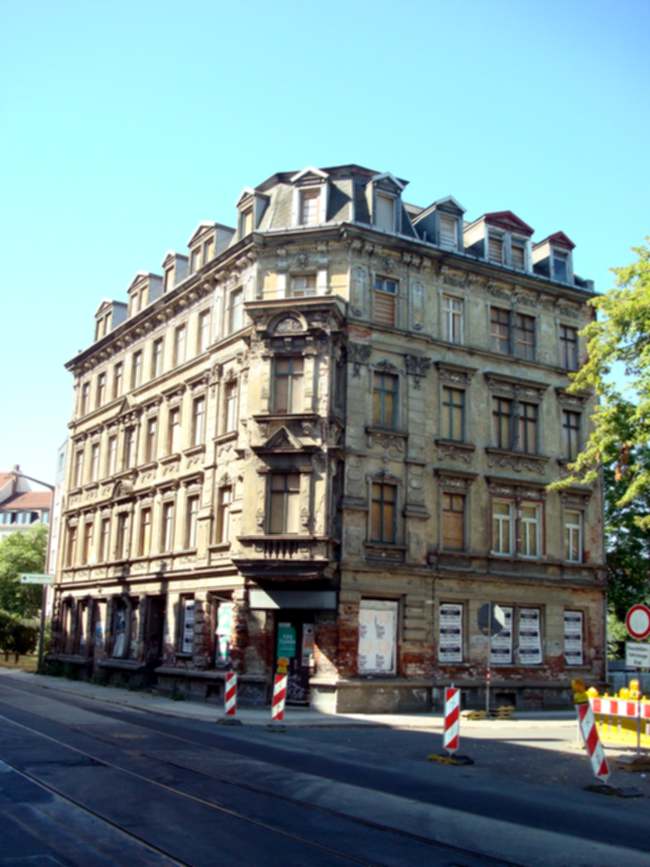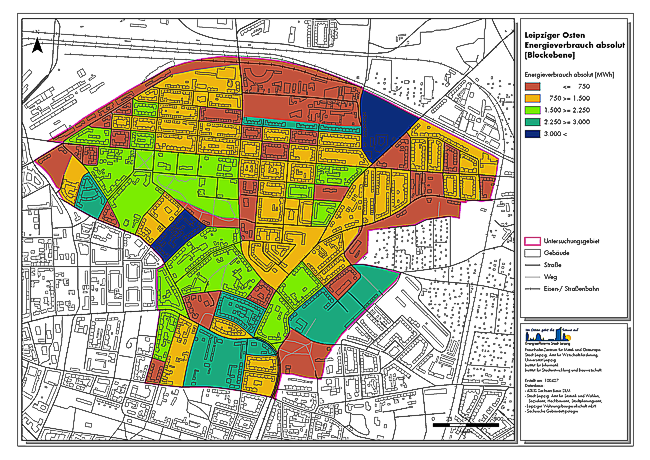 Future strategies and measures of spatial development will increasingly focus on energy policy. Adopting a holistic approach, measures of mitigation and measures of adaptation need to be combined. In addition, socio-political elements should be taken into account. Therefore the term “climate justice” contains the requirement to be suitable for the climate (as environmental justice) and the socially fair arrangement of these strategies in terms of standards of living and survival capability (as social justice).
Future strategies and measures of spatial development will increasingly focus on energy policy. Adopting a holistic approach, measures of mitigation and measures of adaptation need to be combined. In addition, socio-political elements should be taken into account. Therefore the term “climate justice” contains the requirement to be suitable for the climate (as environmental justice) and the socially fair arrangement of these strategies in terms of standards of living and survival capability (as social justice).
A strategic target within this concept of climate justice is to publish and to discuss an “energetic truth”. This term can be defined in the following way:
“Accepting and disclosing of current energetic situation and its impact on the future of availability, consumption and costs of energy. The bounded rationality of politics, economy and private persons has to be accepted and alternative polyrational solutions for present ways of acting have to be shown.” (own definition).
This term implies to enlighten the society about the status quo of energy consumption and the finiteness of fossil fuels as well as telling the truth about perspectives of renewable sources and future energy concepts. The implementation of the energetic truth goes along with the utilization of renewable energy sources, an increase in the efficiency and the adaptation of the current energy infrastructure in combination with the improvement of the physical structure of city as well as the question of decentralization of the main power supply and an energy efficient mobility.

The approach of implementing an “energetic truth” follows the concept of bounded rationality but also emphasizes the need of developing a new so called polyrationality. Therefore it implies two major strategies with the focus on developing new methods of cooperation.
The superior strategy sets the focus on the public authority which is in charge of the overall spatial planning process and therefore responsible to secure the welfare of the general public. An innovative connection between general and sectoral planning is discussed during the process. The superior strategy also includes a dialogue with the public in form of public relations and workshops with the owners and the inhabitants of the district.

The individual strategies contain initiatives of private actors which influence spatial development as well as an analysis of institutions and their patterns of acting. These individual strategies are attended by new service concepts like service engineering.
Current energy spatial policy in Leipzig
The City of Leipzig has set itself the aim of implementing innovative solutions for the sustainable development of its energy supply and consumption. This aim contributes to the City as an Energy Metropolis. The innovative element of this approach is rooted in the integrated way in which forms of change such as dwindling resources, climate change and demographic change are dealt with. By adopting innovative energy-spatial approaches, the city is harnessing new potential.
More than just methods of dealing with other forms of change, innovatively tackling climate change offers the possibility to develop polyrational solutions. A vigorous debate is currently underway concerning the city’s energy development. A quantitative target for the saving of CO2 emissions by the year 2020 is currently being drawn up through Leipzig’s involvement in the European Energy Award and the drafting of its Energy and Climate Protection Concept.

Another joint project run since April of 2009 and has just finished the first phase in end of June 2010: The project “The sun is rising in the east! Energetic spatial concept for Leipzig’s East Side” has been funded by the BMBF German Ministry of Education and Research. Project partners have been the Fraunhofer Center for Central and Eastern Europe (MOEZ, project coordination), the City of Leipzig, the Institute of Urban Development and Construction Management of Leipzig University and the Institute for Applied Informatics e. V. More than the other activities in the Leipzig this project has focused on the integration of energy policy into spatial strategies.
Therefore main objective of the project has been to develop a innovative sustainable concept to implement the energetic spatial policy to realize an energy efficient city of Leipzig taking consideration the demographic change. With the aid of service engineering, in particular new services and private sector activities are to be developed which will contribute to not only the ecological but also the socio-economic dimension of sustainability. This will enable existing obstacles to necessary energy optimization stemming from current socio-economic and cultural restrictions to be overcome. The project partners have applied for a second, so called implementation phase beginning from 2011. A decision of this application will be given next winter.

Case Study area
Case study area of the project has been the inner-city district of East Leipzig. The project area coincides with the area defined in the ERDF urban development administrative regulations for 2007-13. In the study area, the need to take action is intensifying in response to socio-economic circumstances and problems related to urban functions. The area is beset by inefficient energetic structures, high property vacancies, deficits in both the housing sphere and the availability and quality of outdoor areas, and shortcomings in the infrastructure (cf. Fig. 01-04). These problems are exacerbated by above-average unemployment, the highest proportion of recipients of ALG-II unemployment benefit in Leipzig, and the lowest average net income per household in the city.
Overarching and individual strategies have been developed for East Leipzig. Both the decentralisation of technical infrastructures and the more localised supply of energy are under discussion. Implementation has been consensually agreed by the actors. Strategies for tackling demographic change and climate protection are combined for the first time in the project. The findings of the implementation plan will be taken into account in the debate concerning urban redevelopment in East Leipzig and will also provide the basis for advising individual owners regarding their energy requirements.
The empirical establishment of the energy truth in East Leipzig will entail indentifying consumer groups and gauging their energy requirements. Attention will be paid to the following areas in connection with overall energy balancing:
The initial determination of the energy balance will be based on an analytical subdivision by a) socio-economic factors and b) building structures. The following table provides an overview of the characteristics and the sources of data.

The ‘bottom-up’ methodology chosen for energy balancing will enable energy consumption to be ascertained for each building as well as aggregation to calculate the total consumption of the next-higher spatial hierarchical level (block, statistical area, district, entire study area). This is an important distinction between this project and other conventional ‘top-down’ methods used for energy balancing. A communication platform hence enables the energy truth to be communicated at the level of blocks and districts without violating data privacy (Figure 5).
The study methodology is subject to aspects of geographical and factual data. The key questions in this respect were:
As the project work shows, merging different sets of data is a major challenge when drawing up the energy balance, since they are frequently edited in different ways using different data formats and other key characteristics. Given the requirements of a future data infrastructure, the extent to which the current local maintenance of individual sets of data can be replaced by a system of central data management needs to be examined. The issue is not the uneconomic central processing of individual data but rather central data storage. Data would have to be captured using standardised input masks specific to the requirements of local government departments in connection with their usual procedures to ensure that no additional time or human resources are needed.

The communication platform to determine the energy truth is an important module of an integrated urban development process which interlinks the three modules of observation, results monitoring and prediction in the field of information management. This makes it a very useful tool supporting the urban development process. Suitable measures designed to improve energy efficiency are to be implemented in relevant, energy-related spheres. Modelling the energy truth by means of a material-flow model will enable the analytical and conceptual information on energy efficiency to be operationalised and quantitatively balanced. And this will pave the way for identifying and tackling the targets and measures.
Conclusion and outlook
Strategies and measures designed to boost energy efficiency affect local authorities in many of their activities and responsibilities in connection with sustainable development. The aims are to protect natural resources, ensure energy prices are socially acceptable, and strengthen the German economy. By combining climate protection and adaptation, raising energy efficiency will contribute to reducing vulnerability and increasing resilience. And by cutting greenhouse gas emissions, global warming will be stopped or at least diminished, significantly reducing the consequences for the complexly networked systems involving humans and the environment. Each kWh saved will hence help in the medium or long term to reduce the costs of adapting to climate change.
At present, neither the region of Leipzig, the city itself nor East Leipzig enjoy energy independence – and nor are they likely to in the near future owing to the socio-economic and socio-cultural situation described. Instead, an optimum integrated approach needs to be identified that enables sustainable urban development as a whole to be attained and at the same time integrates the requirements for energetic urban development more than before. In this connection, it was decided to develop East Leipzig’s existing motto and use it for the energy-spatial concept: ‘The sun is rising in the east!’
In the project previously separate strategies have engendered ‘energy-spatial’ strategies. In addition, attention has been paid to other forms of change, and dealing with them successfully will ensure that urban development policy is sustainable. To facilitate mitigation as part of climate change, strategies for energy-efficient urban development could not only contribute to dealing with climate change but also deal with other challenges and crises by being made socially just and financeable. Having developed the concept, in future it will be necessary to implement the energetic spatial strategies into the several action fields of urban development.
————————————————————————————————-
Christian Strauß
Fraunhofer Center for Central and Eastern Europe (MOEZ)/Leipzig University
[email protected]
www.moez.fraunhofer.de
© Leipzig July 2010
References:
Energy Metropolis – http://www.energiemetropole-leipzig.de